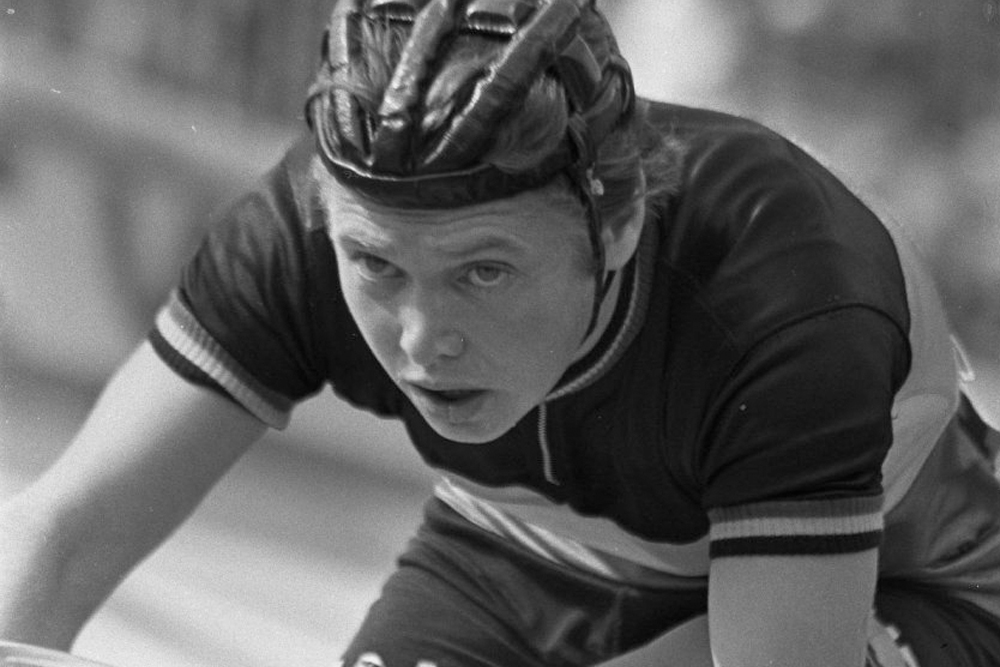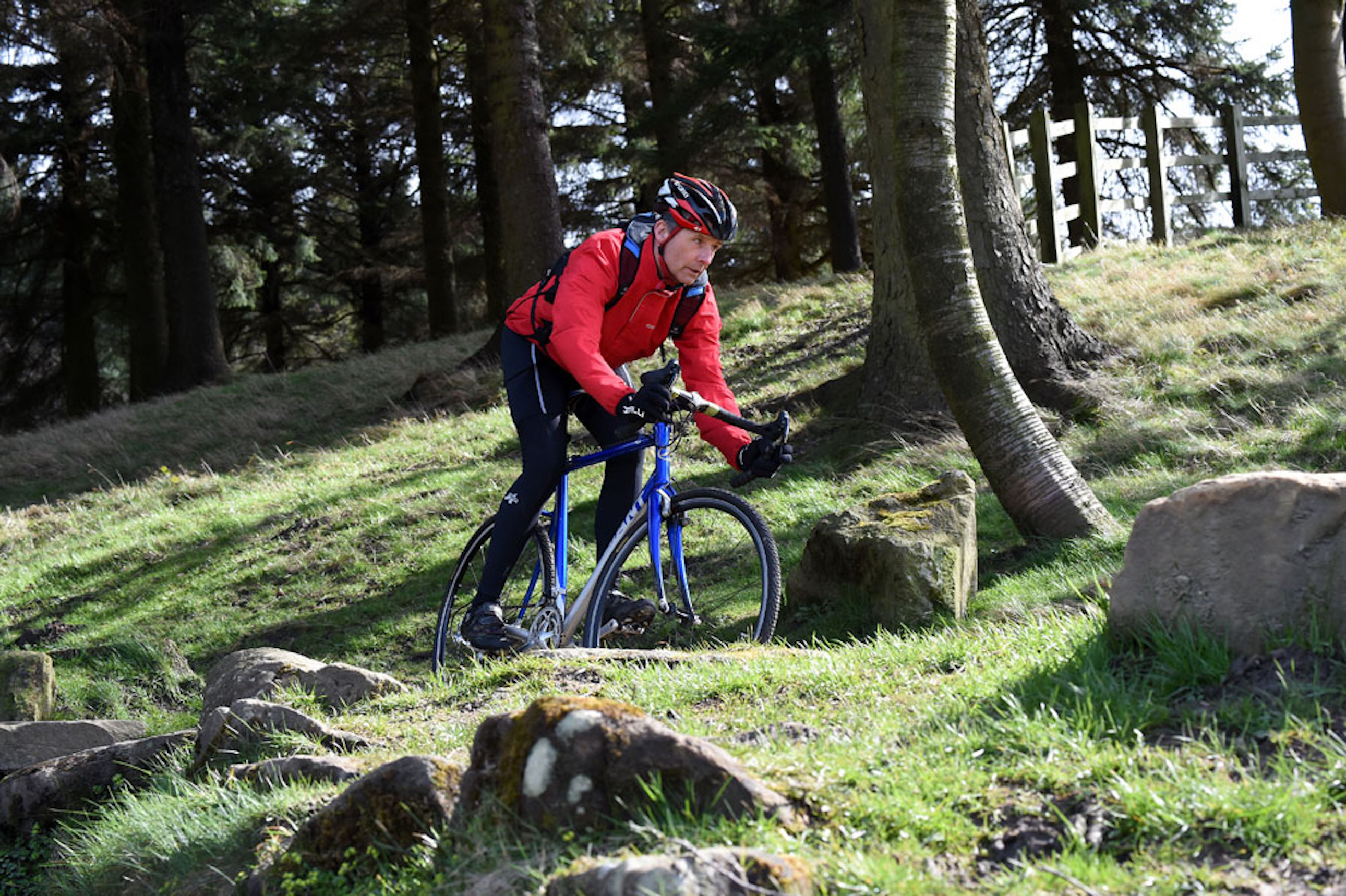How they used to train: How delivering coal helped Yvonne Reynders become a multiple world champion
On National Fitness Day (Wednesday September 25), we take a look back at how Yvonne Reynders went from discus throwing to top cyclist thanks to an intense training regime

Photo: Wikimedia Commons 3.0

In 1956 Yvonne Reynders won her second consecutive Belgian junior discus title. The possibility of her going to the 1960 Rome Olympics was strong, but Reynders didn’t want to throw, she wanted to fly.
She loved speed, and she only took up the discus when coaches convinced she wasn’t fast enough to emulate her running hero, Fanny Blankers-Koen the Dutch winner of four sprint gold medals in the 1948 London Olympics.
So to satisfy her yearn for speed Reynders took up cycling.
She already had some cycling specific strength, because when she left school at 16 her father bought her a three-wheeler carrier bike and helped her set up a coal delivery round.
She kept her carrier bike in Antwerp, and each day she bought coal wholesale form a merchant, loaded as many ten-kilogram sacks into her carrier as she could, and pedalled through the streets Antwerp, delivering to customers and collecting money as she went.
But hauling coal on a bike isn’t flying, and despite some promise in early races Reynders knew she had to lose weight before she could hope for the success she wanted.
>>> Hayley Simmonds: How losing 45kg helped her realise her time trial potential
Get The Leadout Newsletter
The latest race content, interviews, features, reviews and expert buying guides, direct to your inbox!
“I weighed 74 kilograms when I was a discus thrower, and I am not tall,” she told the Belgian journalist Jos Van Landeghem.
“Some of my friends laughed when I said I wanted to become a racing cyclist. They told me I was too fat,” she added.
Find out more about how the pros used to train
How they used to train: How Sean Yates lost weight and re-booted his career
How they used to train: Frans Verbeeck’s power intervals
How they used to train: Eddy Merckx's chain gang
How they used to train: Jacques Anquetil’s time trial training
How they used to train: Eddy Merckx’s pre-1969 Tour de France week
She set about getting thinner. Reynders lived 40 kilometres east of Antwerp in the beautiful Kempen area, and each day she rode those 40 kilometres into Antwerp on her race bike.
Then she did her coal round, eight to 16 kilometres every day on a heavy bike with an even heavier load. In the afternoons she switched back to the race bike and rode 100 to 140 kilometres along the Scheldt valley, eventually returning home.
Reynders did that every weekday, plus more training at the weekends, for six months, but at the end of it she weighed 59.5 kilograms. Now she could fly.
She won ten out of 14 races entered in her first full year, and gained selection for the Belgian national team.
Don't let age slow you down
The next two years weren’t so good because she was plagued with leg pain. She visited lots of doctors, without a solution.
Finally a pro racer from Antwerp, one of the top men of his day, Frans Aerenhouts arranged for Reynders to see his masseur, and he diagnosed a problem with her back.
It was probably caused by lifting those heavy coal sacks. Some physio, a bit of treatment, and Reynders was winning again.
In 1959 she won her first world road race title. It was the first for Belgium too. In 1961 she won the road race, beating the great Beryl Burton, and the world pursuit titles.
Reynders eventually won four road and three pursuit world titles, as well taking several silver and one bronze medal, her last in 1976 in the road race. She was 39.

Thank you for reading 20 articles this month* Join now for unlimited access
Enjoy your first month for just £1 / $1 / €1
*Read 5 free articles per month without a subscription

Join now for unlimited access
Try first month for just £1 / $1 / €1

Chris has written thousands of articles for magazines, newspapers and websites throughout the world. He’s written 25 books about all aspects of cycling in multiple editions and translations into at least 25
different languages. He’s currently building his own publishing business with Cycling Legends Books, Cycling Legends Events, cyclinglegends.co.uk, and the Cycling Legends Podcast
-
 Aero bikes with gravel wheels?: Six tech insights from Paris-Roubaix Femmes
Aero bikes with gravel wheels?: Six tech insights from Paris-Roubaix FemmesEverything we found out about tyre widths, self-inflating systems, and wheel choices from the cobbled Monument
By Tom Davidson Published
-
 'This race is absolutely disgusting': Peloton reacts to another brutal Paris-Roubaix Femmes
'This race is absolutely disgusting': Peloton reacts to another brutal Paris-Roubaix FemmesNow in its fifth edition, Paris-Roubaix Femmes is still a tough race, even for the best bike riders in the world
By Adam Becket Published